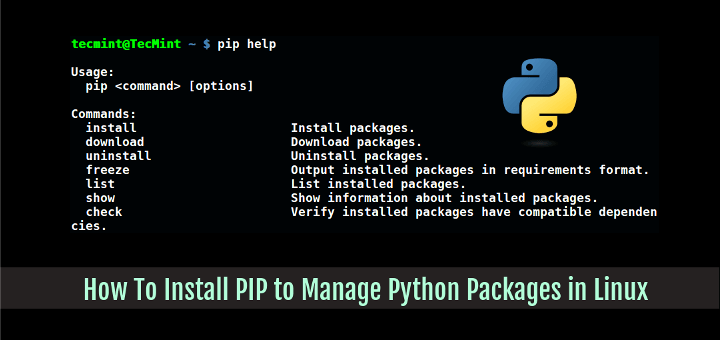
- APT GET INSTALL PIP3 HOW TO
- APT GET INSTALL PIP3 INSTALL
- APT GET INSTALL PIP3 UPDATE
- APT GET INSTALL PIP3 DRIVER
- APT GET INSTALL PIP3 UPGRADE
APT GET INSTALL PIP3 HOW TO
This tutorial will show how to play with PostgreSQL using Psycopg2 on Ubuntu. The current release of Psycopg2 support both Python3 and PostgreSQL9.4. It is widely used and actively developed.
APT GET INSTALL PIP3 DRIVER
Thanks.Psycopg2 is an opensource PostgreSQL driver library in Python. PS. Feel free to share this blog post on installing Pip on Ubuntu if you liked it by using the social network shortcuts – you can also leave a comment instead, found under the share buttons.
APT GET INSTALL PIP3 INSTALL
In case you want to learn how to install pip on Ubuntu 18.04 or how to install pip on Ubuntu 20.04, we’ve prepared step-by-step guides for them as well. Feel free to ask our expert Linux Administrators to install Pip on Ubuntu 16.04 for you, and it will be provided to you within minutes. Installing Pip on Ubuntu 16.04 is an easy task if you have an Optimized Python VPS with us. Hopefully, this tutorial has helped you to successfully install Pip on Ubuntu, as well as show you how to use some of its basic functions. Pip Uninstall – Uninstall a package installed with pip If you like to install pip on a CentOS 7 and Debian 9 based virtual servers, please follow these tutorials below: client-cert Path to SSL client certificate, a single file containing the private key and the certificate in PEM format. trusted-host Mark this host as trusted, even though it does not have valid or any HTTPS. exists-action Default action when a path already exists: (s)witch, (i)gnore, (w)ipe, (b)ackup. timeout Set the socket timeout (default 15 seconds). proxy Specify a proxy in the form Maximum number of retries each connection should attempt (default 5 times). Option is additive, and can be used up to 3 times. isolated Run pip in an isolated mode, ignoring environment variables and user configuration. Wheel Build wheels from your requirements.Ĭompletion A helper command used for command completion Show Show information about installed packages. In the case where you’d like to uninstall a package, you can use the following command: pip uninstall package_nameįor more Pip options and usage examples you can use the -help flag: # pip -helpįreeze Output installed packages in requirements format. To install the package, you can use the following command: pip install package_name 7. To search for a package, you can use the following command: pip search package_name 6. Now that you have installed Pip, below are some useful commands to help get you started with using Pip. That means Pip has been successfully installed on your Ubuntu server and is ready to use.

Pip 8.1.1 from /usr/lib/python2.7/dist-packages (python 2.7) You should see an output similar to the following: # pip -V Once the installation is completed, you can verify that it was successful by using the following command: pip -V The apt package manager will install Pip and all the dependencies required for the software to work optimally. The only thing you need to do is to run the following command: sudo apt-get install python-pip 3. The installation of Pip is very simple, and is done through “apt-get”.
APT GET INSTALL PIP3 UPGRADE
Once the upgrade is completed, you can move on and install Pip onto your Ubuntu VPS.

APT GET INSTALL PIP3 UPDATE
Run the following command to update the package list and upgrade all of your system software to the latest version available: sudo apt-get update & sudo apt-get -y upgrade 2. Connect to SSH and Update your System Softwareįirst of all, connect to your server via SSH and make sure that all your system software is up to date. Installing Pip on Ubuntu 16.04 is an easy task – just carefully follow the steps in this tutorial, and you should have Pip installed on Ubuntu 16.04 in less than 10 minutes. Pip also has a feature to manage full lists of packages and corresponding version numbers, made possible through a “requirements” file. Pip is a widely-used Python package manager, known for its user-friendliness and performance. These software packages are written in Python and are typically used to extend or enhance a Python application. Pip is a python package management system used to install and manage software packages which are found in the Python Package Index (PyPI). We’ll show you how to install Pip on Ubuntu 16.04.


 0 kommentar(er)
0 kommentar(er)
